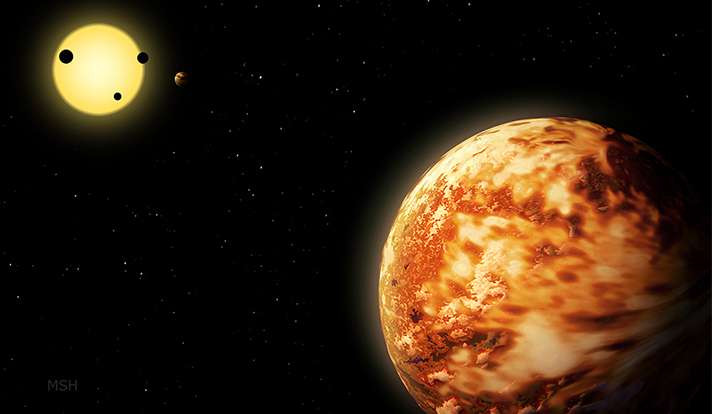Astronomers may have discovered 'mirror image' of sun-Earth pair 3000 light years away
The team of international researchers made observations since the year 2009.
Scientists may have discovered what they are describing as a "mirror image" of our planet and the Sun. The researchers from Max Planck Institute for Solar System Research in Göttingen, Germany, have discovered a possibly habitable planet that orbits around a sun-like star.
The star Kepler-160 and its companion KOI-456.04 resemble the star-planet-system like ours. KOI-456 is among the 4,000 known exoplanets discovered so far. However, what makes it extra special is that it orbits around a star and it does so with a "star-planet distance" that is could "permit planetary surface temperatures conducive to life."
KOI-456.04 is reportedly less than twice the size of Earth and it is located about 3000 light-years away from our solar system. It orbits around Kepler-160 at about the same distance as Earth to the sun and takes around 378 years to complete one orbit. The star emits visible light and infrared radiation that is smaller and fainter than the sun. Therefore, it belongs to the category of red dwarf stars as explained in the statement.
The discovery was made by an international team of astronomers led by Dr. René Heller including scientists from MPS, the Sonneberg Observatory, the University of Göttingen, the University of California in Santa Cruz, and from NASA. The findings were revealed by observations continuously from 2009. They used a new search algorithm for the discovery.
"KOI-456.01 is relatively large compared to many other planets that are considered potentially habitable. But it's the combination of this less-than-double the size of the Earth planet and its solar type host star that make it so special and familiar," Heller said.
Kepler was observed in the field view of Kepler primary mission. Its radius of 1.1 solar radii and its surface temperature is 5200 degrees Celsius which is 300 degrees less than our sun. Also, its "sun-like luminosity" is what makes it's appearance similar to our own "parent-star."
The study is published in the journal Astronomy & Astrophysics.
"The surface conditions on KOI-456.04 could be similar to those known on Earth, provided its atmosphere is not too massive and non-Earth-like," reads the news statement. "The amount of light received from its host star is about 93 percent of the sunlight received on Earth."
However, the team of researchers insists that further investigation is needed in formally establishing if KOI-456.04 is a planet or simply "a statistical fluke or a systematic measurement error."
"The team estimates the chances of a planetary nature of KOI-456.04 to be about 85 percent pro planet. Obtaining a formal planetary status requires 99 percent," the team said.

In their report, they have enlisted PLATO space mission of ESA to be capable of helping them determining the truth. Meanwhile, PLATO will be launched in 2026 with an objective of discovering Earth-sized planets in our solar system.
© Copyright IBTimes 2025. All rights reserved.





















